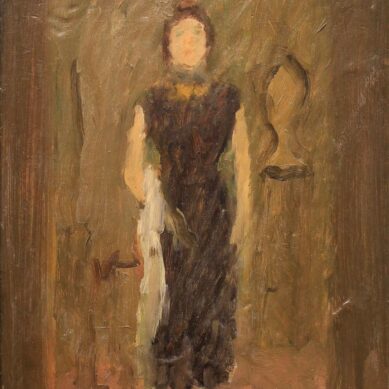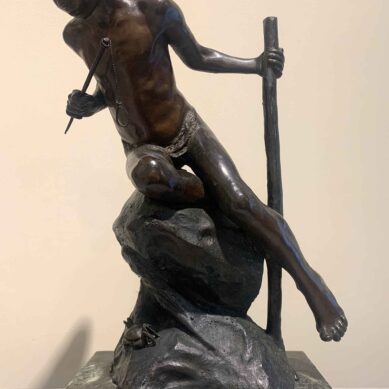You searched
Painter
Mario Mafai
Are you interested in the sales or the purchase of his artworks?
We buy works of this artist
and of other painters and sculptors from the 16th century to the first half of the 20th century
The Berardi gallery offers a free and without obligation service for evaluation of ancient and modern art . To find your way in the art market, very complex and full of nuances, it is better to rely on a professional consultant who can answer fast and concretely to your needs. The clarity of the answers will resolve effectively the need to estimate or sell an asset.
Contact us immediately without commitment
Answers also in 24 hours:
Mario Mafai
Mario Mafai
Mario Mafai was born in Rome in 1902. Coming from a middle-class family, he was introduced to scientific studies, but soon abandoned them to devote himself to painting. In 1922, he started attending the Scuola Libera del Nudo, where two years later he met Scipione, with whom he immediately established a strong friendship.
The Scuola di Via Cavour
In 1925, he met the painter and sculptor Antonietta Raphaël. An artistic and emotional bond was immediately formed between them. Together, they formed the association that took the name Scuola di via Cavour, from their studio house, which was a meeting place for many artists of the time from 1927 onwards.
The house was frequented by painters such as Scipione and Francesco di Cocco, but also by poets such as Ungaretti, who would always be very close to the artists of the Roman School, and by influential figures of the critics of the time, such as Libero De Libero who, from 1935, would direct the Galleria La Cometa, another reference point for the group.
Mario Mafai’s stylistic developments were closely linked to the maturation of the entire group. Also in the crucial 1927, after visiting the fundamental exhibition at the Pensione Dinesen of Cavalli, Capogrossi and Di Cocco, he moved more and more towards a decisive expressionism, which he already shared with Antonietta Raphaël and Scipione.
His inspiration for the antique does not come, as in the Novecento group, from a solemn and traditional classicism, but from the often visionary dimension of Tuscan Mannerism or artists such as El Greco, characterised by that tormented chromatism and sudden opaline highlights. Mario Mafai made his debut at the Sindacale del Lazio in 1929 with Sunset and Sunset on Lungotevere, expressive and fiery landscapes.
The Parisian sojourn and the detachment from Scipione
At this time, he was still very attached to Scipione’s language, from which he would soon move away, after an experience in Paris with Antonietta Raphaël that brought him closer to a chromatic sensibility of a more tonal and intimate nature.
At Pier Maria Bardi’s invitation, Scipione and Mafai exhibited together once more at the Galleria di Roma, but their differences were already becoming more marked: the former still adopted a suffered and hallucinated style of painting, which almost seemed to reflect the illness that would lead to his death in 1933. The latter, on the other hand, toned down his incendiary colours and became an artist of tone, of delicate and introspective arrangements.
His undulating, expressive brushstrokes were filled with lyrical intimism, completely detaching himself from his dear friend Scipione, who had now passed away.
Mario Mafai: symbol of the Roman School
After taking part in the Quadriennale in 1931 with Portrait of an Italian Family, Composition and The Houses of the Forum of Trajan, he held a solo exhibition at the same exhibition in 1935 where he won first prize. He exhibited his most significant works there, including The piano lesson, Head of Miryam, Women undressing, Nude at rest, Flowers in the sun and Janiculum at sunset.
It was around the mid-1930s, moreover, that Mafai developed a dimension that was not only reflective but also critical of the regime and the architectural destruction taking place in Rome. These were the Demolitions, which presented an increasingly delicate and tonal painting and were exhibited in a solo show at La Cometa in 1937.
Towards the end of the 1930s, he left Rome and went to Genoa to protect Antonietta from racial persecution. By the end of the war, Mario Mafai was recognised as the leading representative of the Roman School. He exhibited all over Italy and the world: he was present at the 1948 Biennale with his most important solo exhibition and actively participated in the events organised by Prampolini’s Art Club. Active until the end, after a personal exhibition at Fabio Sargentini’s Attico, he died in Rome in 1965.
Elena Lago







